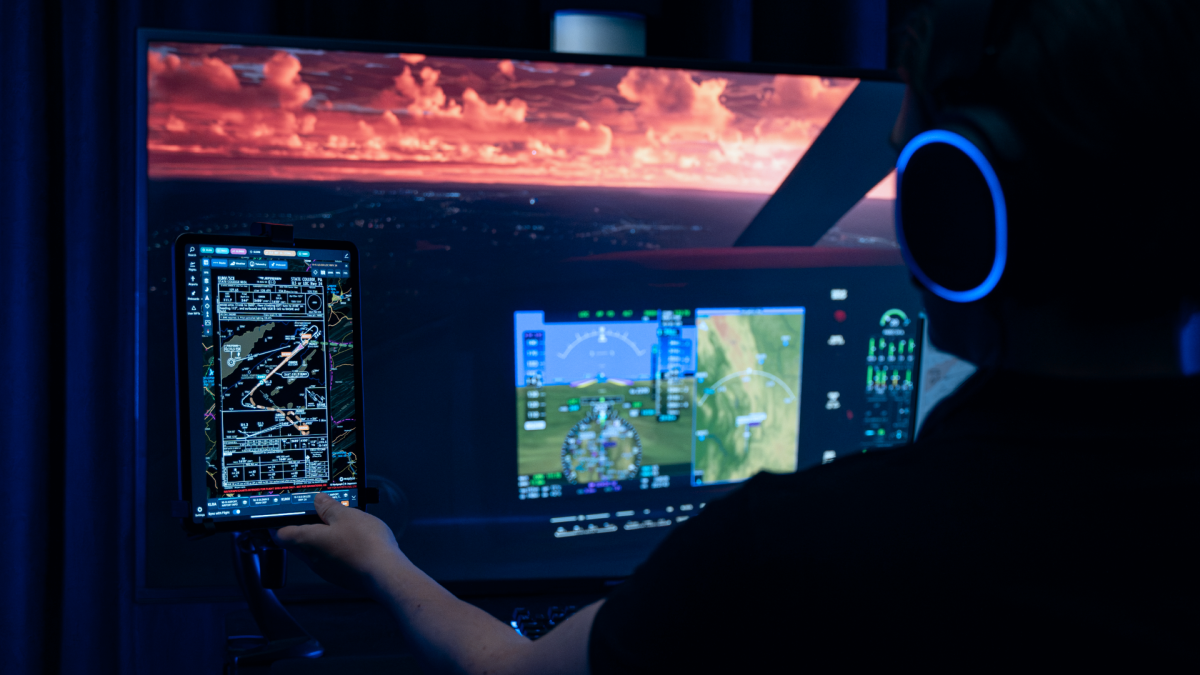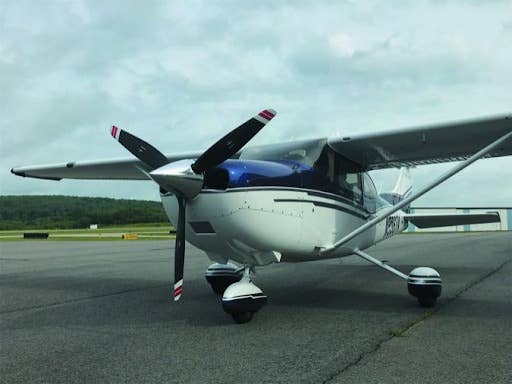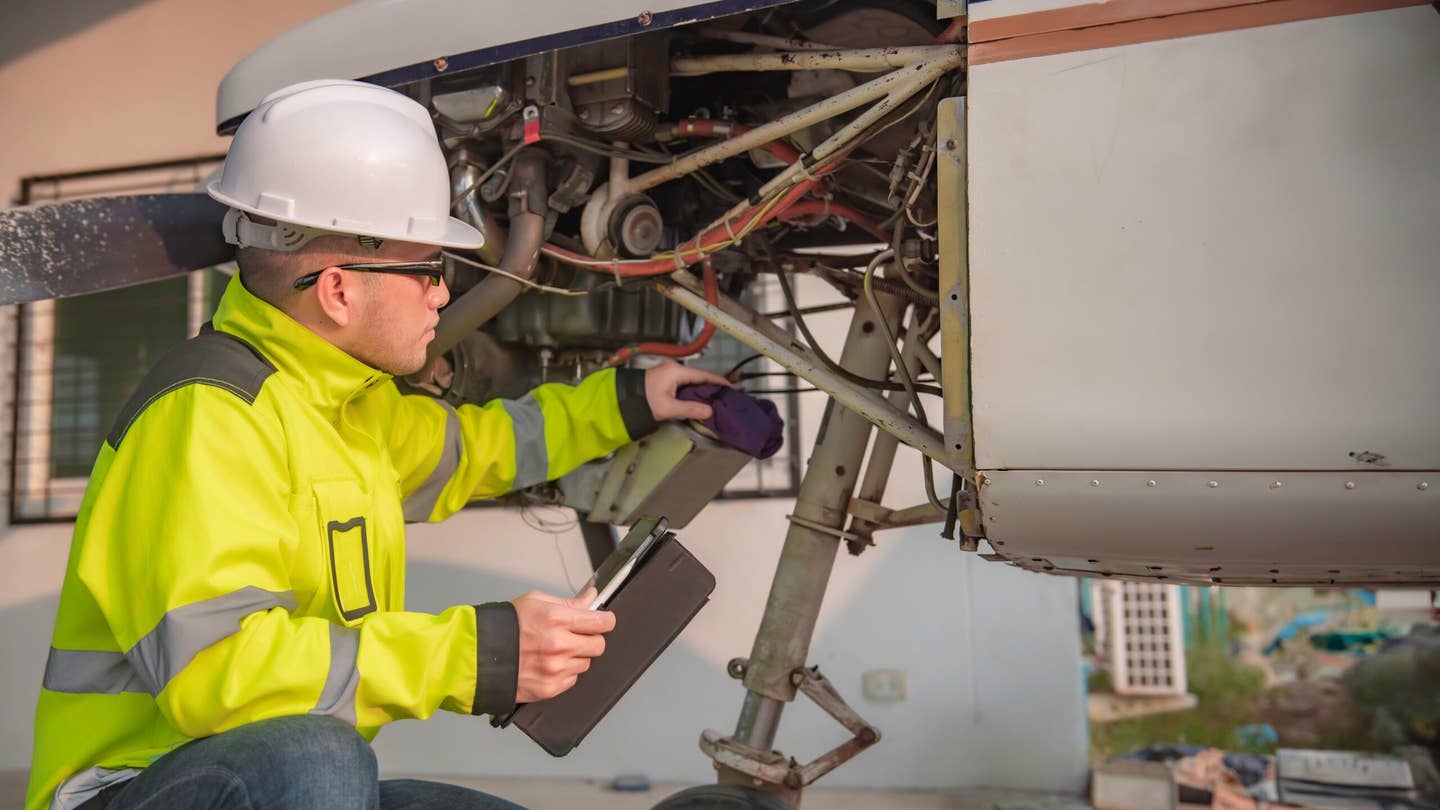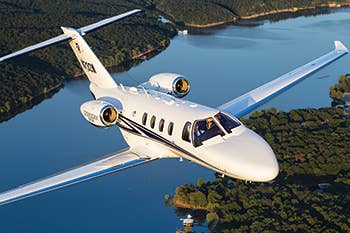
Flying an approach in Microsoft Flight Simulator using Navigraph Charts app on an iPad, featuring a Jeppesen approach chart. [Courtesy: Navigraph]
The evolution of flight simulation since the 1980s has been remarkable. Back then, runways were simply depicted as green sticks. However, modern PC desktop simulators have undergone substantial advancements, now capable of replicating system intricacies for a wide range of aircraft, including fluid dynamics, hydraulics, and even simulating system failures. The modern-day simulators also offer breathtaking scenery and meticulously detailed airports. The significant advancements in flight simulators have enabled them to become excellent resources for pilot training, staying current, and providing pure enjoyment for sim enthusiasts.
Navigraph has been the flight simulation community's trusted charts and navigation data provider for more than two decades. With a user base surpassing 1 million, Navigraph is highly regarded for its all-in-one subscription offering, providing a comprehensive suite of charts, navigation data, and flight planning utilities. In the user-friendly Charts app, subscribers can access worldwide IFR charts and VFR maps sourced from Jeppesen.
In this article, we'll embark on a flight from Los Angeles International Airport (KLAX) to Harry Reid International Airport (KLAS) in Las Vegas, utilizing Navigraph's simulation apps for flight planning, charts, and navigation data, observing how they seamlessly integrate to enhance the simulation experience.
Navigating the Struggle: Flight Planning
Virtual pilots, like their real-world counterparts, must meticulously plan flights, understand fuel consumption, monitor real-world weather injected into the simulator, and if flying a commercial airliner, take on roles such as dispatcher, baggage handler, operations agent, and sometimes even cabin crew duties, among others.For our KLAX-KLAS flight, we'll utilize SimBrief, a free flight planning application by Navigraph. SimBrief will generate a real-world-based dispatch release, or operational flight plan (OFP), which can be up to 40 pages long. These OFPs can be input directly into the flight management computer (FMC) of many popular simulator aircraft for enhanced convenience.
Staying Current: Jeppesen Data
Navigraph ensures that subscribers have access to the latest Jeppesen data across all their services. They also offer navigation data update apps for popular simulators, as well as add-on aircraft and tools. Every 28 days, Navigraph updates the Jeppesen data, including waypoints, VORs, NDBs, intersections, and airports, aligning with the real AIRAC cycle. We use the Navigraph Hub desktop app to install current Jeppesen data into our Microsoft Flight Simulator. The navigation data installation is done with the click of a button.
With the current AIRAC cycle installed, we can enter the simulator. This flight is conducted in Microsoft Flight Simulator (MSFS) on a PC, however, integrated features are available for several MSFS aircraft on Xbox. Navigraph offers extended integrations, such as charts with moving maps, navigation data, and flight plan import capabilities for MSFS, X-Plane, and many add-on aircraft for Prepar3D and Microsoft Flight Simulator X.
Seamless Integration: Navigraph Charts App
Utilizing the SimBrief import feature, we load our flight plan into Navigraph Charts. We'll now be provided with a visual representation of our route. The charts include high and low IFR en route symbology familiar to Jeppesen users. Navigraph's global charting capability allows access to airport charts, SIDs, STARs, and approaches in Jeppesen format without regional limitations.
Upon reaching the gate at LAX, we activate Navigraph's weather overlays to assess current and upcoming weather conditions. Forecasts on turbulence help anticipate our experience at cruising altitude, essential for ensuring passenger comfort. A handy feature in Navigraph Charts for increased situational awareness is the overlay feature, allowing us to superimpose our SID out of LAX.
Navigraph provides several methods for pilots to incorporate their technology into simulation.
First, there's the mobile app, accessible via the Apple Store or Google Play, effectively transforming your tablet or smartphone into an Electronic Flight Bag (EFB). Second, they offer their desktop application, Navigraph Charts, ensuring full functionality across various platforms.
Navigraph also offers a web-based cloud interface and its Charts In-Game Panel for MSFS that seamlessly integrates into the simulator as a compact window. In addition to the native apps, Charts can be displayed inside the virtual cockpit environment of many aircraft, enhancing the overall immersion and facilitating a better virtual-reality experience.
Flight Essentials: Key Features in Charts
The Navigraph Charts app boasts an array of valuable features essential for every flight. These include real-world ATIS for designated airports, METARs, NOTAMs, moving maps (ideal for real-time position tracking), and telemetry monitoring, providing crucial flight data.
We utilized Navigraph's VFR charts during our flight, seamlessly incorporating FAA sectionals directly into the app. For example, when we wanted to pinpoint Soda Lake for our virtual passengers, it was conveniently located on the VFR sectional chart, just northeast of the Hector (HEC) VOR—really good for those PAs.
KLAS is a busy airport. We use Navigraph's annotation feature to draw our taxi route to the gate. For increased resolution as we approach it, we use the map view and zoom-in to access the detailed airport diagrams in Charts powered by Jeppesen's Airport Mapping Database (AMDB).
Navigraph: Your Key to Elevated Flight Simulation
Navigraph's comprehensive suite of features revolutionizes the flight simulation experience. With comprehensive flight planning, worldwide Jeppesen charts, and matching data, Navigraph covers the needs of any IFR flight simulation adventures.
The integration of worldwide VFR maps and U.S. sectionals adds another layer of detail, allowing flight simmers to navigate with precision and share geographical landmarks effortlessly.
Whether accessed through the mobile app, desktop application, web interface, or in-game panel, Navigraph's versatility and functionality make it an indispensable tool for enhancing the realism and accuracy of flight simulations. It's a must-have if you want to take flight simulation to the next level.

Sign-up for newsletters & special offers!
Get the latest FLYING stories & special offers delivered directly to your inbox



![[PILOT AND SNELLEN CHART PIC]](https://www.flyingmag.com/uploads/2022/11/2022-FlyingMag.com-Native-Advertising-Main-Image--scaled.jpeg?auto=webp&auto=webp&optimize=high&quality=70&width=1440)


